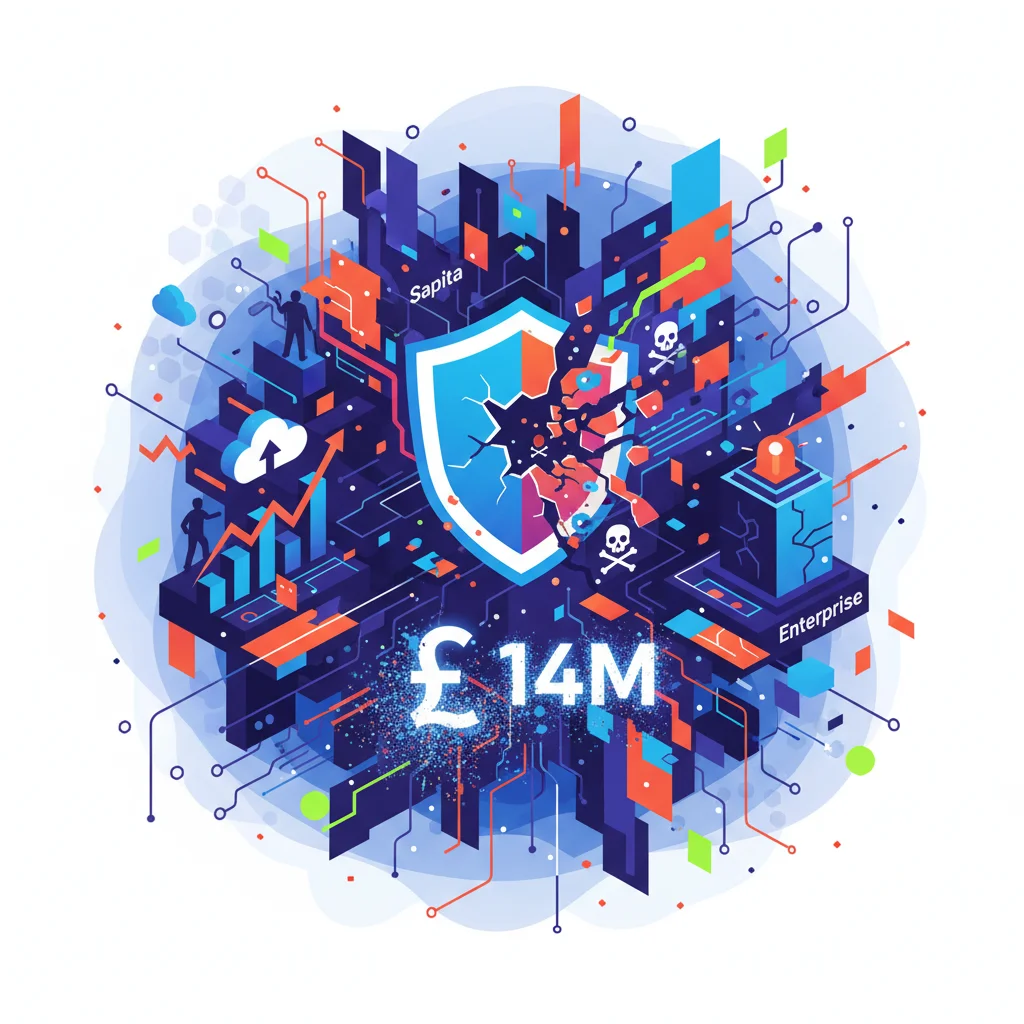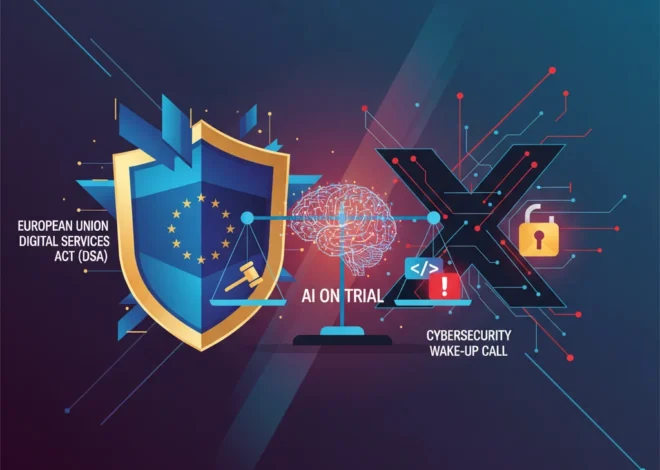
Capita’s £14m Nightmare: A Data Breach Wake-Up Call for Every SaaS, Startup, and Enterprise
It’s the kind of headline that sends shivers down the spine of every CEO, CTO, and startup founder: a colossal £14 million fine. This isn’t a hypothetical scenario; it’s the reality for outsourcing giant Capita, who recently accepted liability after a devastating data breach. The UK’s data watchdog, the Information Commissioner’s Office (ICO), concluded that the firm failed to protect the sensitive data of millions of people.
But this story is much bigger than a single fine. It’s a cautionary tale written in the language of modern business—a language of cloud infrastructure, third-party software, and the ever-present threat of cyberattacks. For developers, entrepreneurs, and tech leaders, the Capita incident is a masterclass in what not to do. It’s a stark reminder that in our interconnected world, cybersecurity isn’t just an IT department problem; it’s a fundamental pillar of business survival and innovation.
In this deep dive, we’ll dissect the anatomy of this breach, explore the true cost of getting security wrong, and reveal how technologies like artificial intelligence and automation are not just buzzwords, but essential tools in the modern digital fortress.
The Anatomy of a Multi-Million Pound Failure
To understand the gravity of the situation, we need to look beyond the fine. Capita isn’t just any company; it’s a massive outsourcing partner for some of the UK’s most critical services, including the National Health Service (NHS), the military, and numerous local councils. The data they handle isn’t just names and emails; it’s deeply personal, financial, and potentially life-altering information.
The breach itself was a result of a ransomware attack by the notorious Black Basta group. In March 2023, the attackers exploited a vulnerability in Capita’s systems, gaining access and exfiltrating a trove of data before encrypting files. The ICO’s investigation found several critical failures:
- Inadequate Security Measures: The watchdog pointed to a simple failure to implement robust cybersecurity measures to prevent the attack.
– Unpatched Software: Many significant breaches start with a known vulnerability that was never patched. While specifics on the exact vector are often kept confidential, this is a common entry point for ransomware gangs.
– Data Sprawl: The compromised data was reportedly stored on publicly accessible Amazon S3 buckets, a common cloud misconfiguration issue. This highlights a failure in managing and securing data across a complex cloud environment.
The ICO’s Deputy Commissioner, Stephen Bonner, stated that Capita’s failure to secure the data of its customers and staff was “unacceptable.” The resulting fine, while substantial, is only part of the financial fallout. Capita itself estimated the direct costs of the cyber-attack—including remediation, specialist fees, and system restoration—could reach up to £25 million, according to a statement made to the London Stock Exchange.
This incident underscores a critical lesson for any business, especially startups and SaaS companies building on the cloud: your infrastructure’s security is your responsibility, and the consequences of failure are severe.
Beyond the Fine: The True Cost of a Data Breach
A £14 million fine is a headline-grabber, but it’s just the tip of the iceberg. The total cost of a data breach extends far beyond the regulatory penalty. For any tech professional or business owner, understanding these cascading costs is crucial for making the business case for robust cybersecurity investment.
Here’s a breakdown of major data breach fines levied by the ICO, putting Capita’s penalty into perspective:
| Company | Year of Fine | Fine Amount | Reason for Fine |
|---|---|---|---|
| British Airways | 2020 | £20 million | Failure to protect personal and financial data of over 400,000 customers. |
| Marriott International | 2020 | £18.4 million | Exposing details of approximately 339 million guests globally. |
| Capita | 2024 | £14 million (liability accepted) | Failure to protect client and staff data from a ransomware attack. |
| TikTok | 2023 | £12.7 million | Misusing children’s data and processing data of under-13s without parental consent. |
| Clearview AI | 2022 | £7.5 million | Illegally collecting images of people in the UK from the web and social media. |
Beyond the direct financial hit from fines and remediation, businesses face a host of other damaging consequences:
- Reputational Damage: Trust is the currency of the digital age. A breach erodes customer confidence, making it harder to acquire new users and retain existing ones.
- Customer Churn: B2B and B2C clients will flee to competitors they perceive as more secure. For a SaaS business, this can be an extinction-level event.
- Increased Scrutiny: A major breach puts you on the radar of regulators, clients, and investors, leading to more frequent and intense audits.
- Operational Disruption: Recovering from a ransomware attack can take weeks or months, paralyzing operations and halting innovation and development.
The Double-Edged Sword: AI, Cloud, and Automation in Cybersecurity
The Capita breach occurred in a landscape defined by cloud computing, complex software supply chains, and increasing automation. These very tools of innovation can become liabilities if not managed correctly. However, they also hold the key to building a more resilient defense.
How Modern Tech Stacks Create Risk
The attack on Capita highlights vulnerabilities common in modern IT environments. The reliance on vast, interconnected systems—often a mix of on-premise legacy software and multi-cloud services—creates a massive attack surface. A single misconfiguration in a cloud service, a forgotten unpatched server, or a compromised credential in a SaaS platform can be the foothold an attacker needs. For startups moving at lightning speed, it’s easy to let security best practices slip, creating a debt that attackers will eventually call in.
Leveraging Innovation for a Proactive Defense
The good news is that the same technological wave creating these challenges also provides powerful solutions. This is where keywords like **artificial intelligence**, **machine learning**, and **automation** become critical components of a modern cybersecurity strategy.
1. AI and Machine Learning for Threat Detection: Traditional security tools rely on known signatures of malware. They can’t stop what they haven’t seen before. Modern AI-powered systems, however, don’t look for signatures; they look for anomalies. A **machine learning** model can learn the baseline of normal network activity. When a developer’s credentials are suddenly used to access a database at 3 AM from an unusual location, the **AI** flags it instantly—long before a human analyst would notice. This is the future of proactive defense.
2. Automation for Security Hygiene: One of the root causes of the Capita breach was likely a failure in basic security hygiene, such as patching. **Automation** can solve this at scale. Automated platforms can continuously scan for vulnerabilities across your entire cloud and software stack, apply patches without human intervention, and ensure security configurations are always compliant with best practices. This frees up your development and operations teams to focus on **innovation** and **programming** new features, not manual security tasks.
3. Secure Cloud and SaaS Architecture: For any business, from a two-person startup to an enterprise, building on a secure **cloud** foundation is non-negotiable. This means going beyond the default settings. It involves implementing Identity and Access Management (IAM) with the principle of least privilege, encrypting data at rest and in transit, and using cloud-native security tools to monitor for misconfigurations. When choosing **SaaS** vendors, their security posture becomes your security posture. Due diligence is paramount.
Actionable Lessons for Every Tech Business
The Capita story is not just news; it’s a curriculum. Here are actionable takeaways for different stakeholders in the tech ecosystem.
To help organize your efforts, here is a quick-reference checklist of cybersecurity fundamentals.
| Security Domain | Action Item for Startups & Developers | Advanced Strategy for Enterprises |
|---|---|---|
| Access Control | Implement Multi-Factor Authentication (MFA) everywhere. Use strong, unique passwords. | Deploy a Zero Trust architecture. Enforce principle of least privilege with granular IAM policies. |
| Cloud Security | Understand and use the security tools provided by your cloud provider (e.g., AWS GuardDuty, Azure Security Center). | Implement a Cloud Security Posture Management (CSPM) tool for continuous monitoring and automated remediation. |
| Software Development | Integrate security into your CI/CD pipeline (DevSecOps). Scan code and dependencies for vulnerabilities. | Conduct regular third-party penetration testing and threat modeling for all new applications. |
| Incident Response | Have a written, simple incident response plan. Know who to call and what steps to take. | Maintain a 24/7 Security Operations Center (SOC) with AI-powered threat detection and run regular tabletop exercises. |
| Vendor Management | Ask for security documentation (e.g., SOC 2 reports) from your key SaaS providers. | Implement a comprehensive Third-Party Risk Management (TPRM) program with continuous monitoring of your entire supply chain. |
As a leading risk management firm, Kroll, reported a 66% year-over-year increase in the number of organizations falling victim to ransomware in the second quarter of 2023. This trend shows no sign of slowing down, making proactive defense more critical than ever.
Conclusion: From Liability to Leadership
The Capita data breach and its £14 million consequence serve as a powerful, if painful, lesson. In today’s digital economy, data is the most valuable asset, and protecting it is the most critical responsibility. A failure in **cybersecurity** is no longer just a technical issue; it is a profound business failure with devastating financial and reputational costs.
For startups, developers, and established enterprises alike, the path forward is clear. It requires a cultural shift where security is woven into the fabric of the organization—from the first line of **programming** code to the final deployment on the **cloud**. It means embracing **innovation** not just in product development, but in defense, leveraging the power of **AI**, **machine learning**, and **automation** to stay ahead of adversaries.
The question every leader should be asking is not “if” they will be targeted, but “when.” The answer to that question will be determined by the investments in people, processes, and technology made today. Don’t wait for your own multi-million-pound wake-up call.


